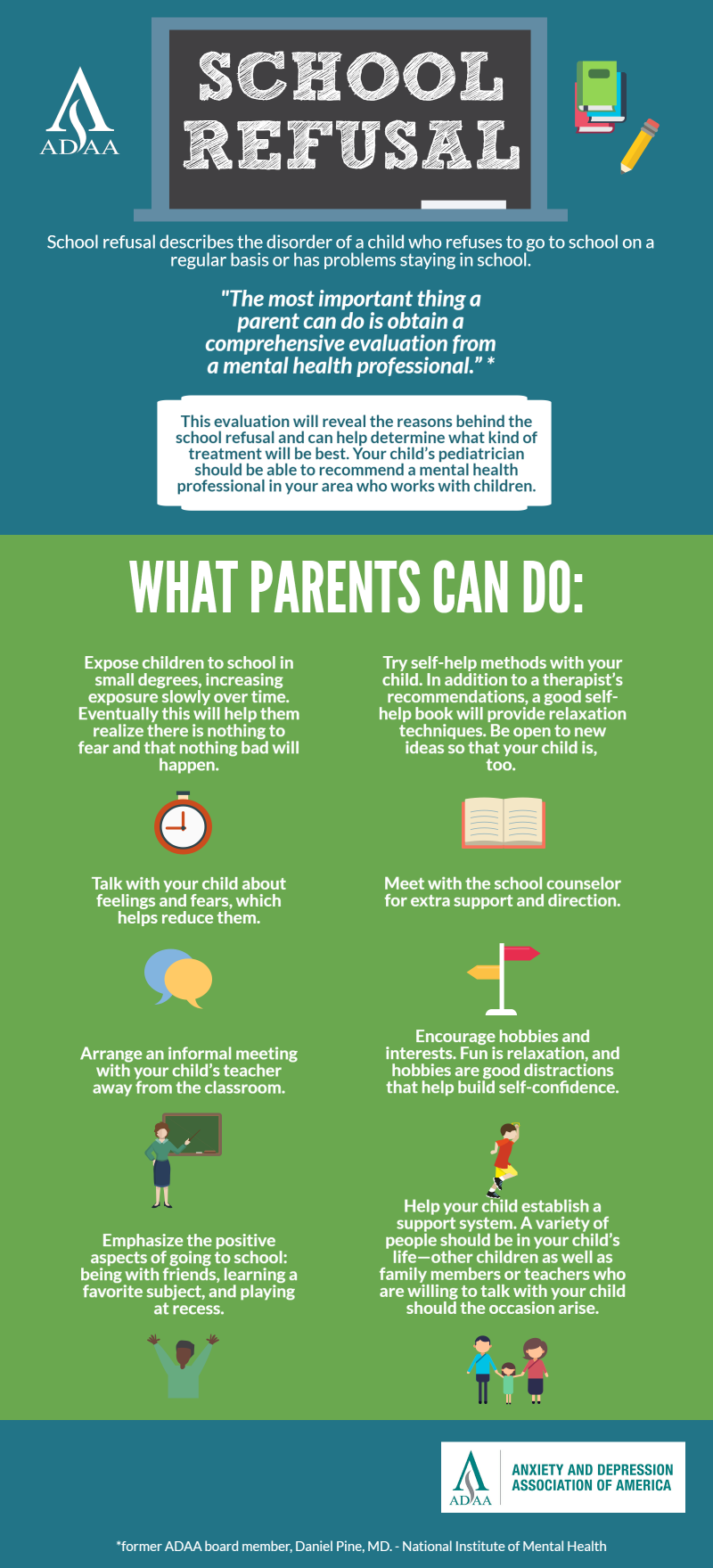School refusal describes the disorder of a child who refuses to go to school on a regular basis or has problems staying in school.
Symptoms
Children with school refusal may complain of physical symptoms shortly before it is time to leave for school or repeatedly ask to visit the school nurse. If the child is allowed to stay home, the symptoms quickly disappear, only to reappear the next morning. In some cases a child may refuse to leave the house.
Common physical symptoms include headaches, stomachaches, nausea, or diarrhea. But tantrums, inflexibility, separation anxiety, avoidance, and defiance may show up, too.
Reasons
Starting school, moving, and other stressful life events may trigger the onset of school refusal. Other reasons include the child’s fear that something will happen to a parent after he is in school, fear that she won’t do well in school, or fear of another student.
Often a symptom of a deeper problem, anxiety-based school refusal affects 2 to 5 percent (see references below)* of school-age children. It commonly takes place between the ages of five and six and between ten and eleven, and at times of transition, such as entering middle and high school.
Children who suffer from school refusal tend to have average or above-average intelligence. But they may develop serious educational or social problems if their fears and anxiety keep them away from school and friends for any length of time.
- Related: When Kids Refuse to Go to School
- Refusal: A large number of kids just say no to school
- Find out more about children’s anxiety disorders.
*References for statistics (as of September 2019)
- https://www.sciencedirect.com/science/article/pii/S1888899215000124
- http://citeseerx.ist.psu.edu/viewdoc/download?doi=10.1.1.563.5265&rep=rep1&type=pdf












